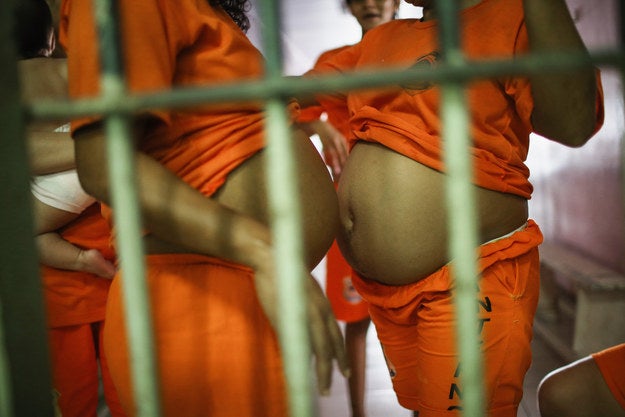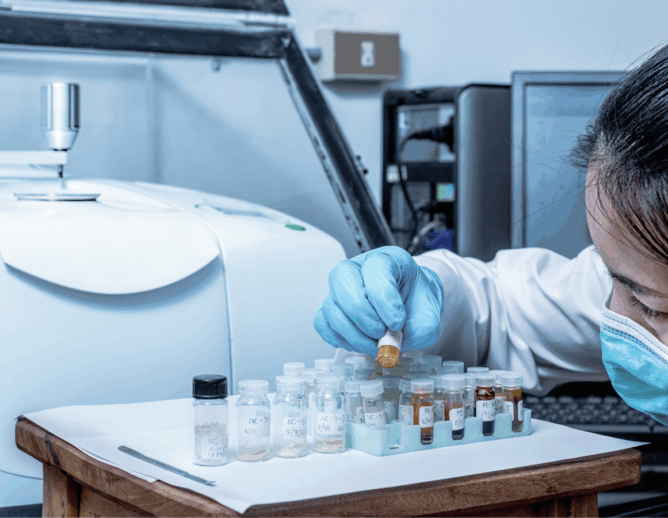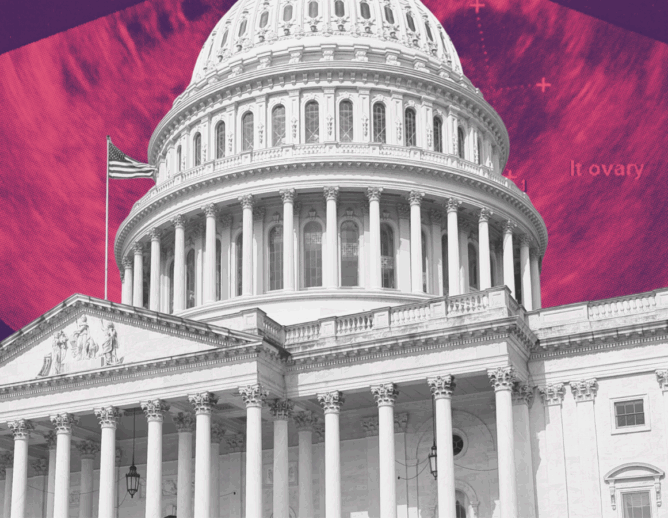 Starting to binge watch the third season of Netflix’s acclaimed ‘Orange is the New Black’ might make us think we know what women’s prisons in the US are like. However, as enjoyable (or cringe worthy at times) as the show may be, it misrepresents the real women’s federal prison population and gives us only a glimpse into the problems these women face day to day.
Starting to binge watch the third season of Netflix’s acclaimed ‘Orange is the New Black’ might make us think we know what women’s prisons in the US are like. However, as enjoyable (or cringe worthy at times) as the show may be, it misrepresents the real women’s federal prison population and gives us only a glimpse into the problems these women face day to day.
Currently, there are about 148,200 women in state and federal prisons; one third of the world’s female prison population and 10 times as many as there were in 1980. While the state is allowed to take away their right to freedom, it does not mean we can deny them basic health needs. International law states that no person under any form of detention or imprisonment shall be subjected to torture or to cruel, inhuman or degrading treatment or punishment. Additionally, the UN Basic Principles for the Treatment of Prisoners state that all “all prisoners shall retain the human rights and fundamental freedoms set out in the Universal Declaration of Human Rights”—including the right to health.
While no prisoner should have to face a situation where their health is being put in risk, it becomes even more concerning when we look at who the women in our federal prisons actually are. The majority of women in prisons aren’t the dangerous criminals media might make them out to be. According to the US Department of Justice, only 7% of adult women in federal prisons are there for committing violent offenses. Six out of 10 women in federal prisons are there for nonviolent drug crimes (and not the high level international drug smuggler type of drug crimes either). The show underrepresents the nonviolent, low-level drug offenders, mothers and abuse victims who dominate the prison system. It also fails to show the concerning health problems that these women are threatened with the moment they enter the system. The following are just a few examples of the daunting health risks female inmates encounter:
- A lack of proper health care.
Women inmates suffering from diseases such as asthma, diabetes, sickle cell anemia, cancer, late-term miscarriages, and seizures have little or no access to medical attention. They are also more likely than men to have chronic and/or communicable medical problems, including HIV, Hepatitis C, and sexually transmitted diseases. According to the National Girls Health and Justice Institute, 41% of girls in detention have signs of vaginal injury consistent with sexual assault, eight percent have had positive skin tests for tuberculosis and 30% need glasses but do not have them. There is too few staff to meet physical and mental health needs. This often results in long delays in obtaining medical attention as well as disrupted and poor quality treatment causing physical deterioration of prisoners with chronic and degenerative diseases.
Gynecological care is even worse. Studies have shown that only half of the state prison systems offer female-specific services such as mammograms and Pap smears, and often entail a long wait to be seen. With routine gynecological care and mammograms often unavailable, women frequently suffer from diseases like cervical cancer, which is often successfully treated if detected by Pap smear in its earliest stages.
- Pregnancy is a danger in itself
A lack of adequate health care is made even more evident for the prison’s pregnant population. In a recent investigation, Victoria Law interviewed nearly a dozen women across the country about their experiences of pregnancy and childbirth in prisons and jails. Their stories include long waits for medical care, dismissed concerns and sometimes outright neglect.
Prenatal and postnatal care is notoriously atrocious in prisons. A woman in an Arizona prison almost died last year after receiving a C-section against her will and then having her open wounds “treated” with sugar. While this case may seem extreme, inadequate prenatal care is not uncommon in jails and prisons. A five-year study of reproductive healthcare in New York prisons, released by the Correctional Association of New York, suggested that pregnant women face delays in getting healthcare upon arrival. Although prison policy dictates that pregnant women must see the prison’s ob-gyn within four days of admission, nearly 40 percent of the 18 women surveyed who entered prison pregnant said that getting the first appointment took more than two weeks.
The lack of adequate food for pregnant women is also an issue. Women in prison have reported that they are not given enough food during their pregnancy or not given the necessary nutrients.
Finally, to make matters worse, in 33 states inmates can be forced to give birth in shackles. Amnesty International has called it a violation of human rights; binding a woman during labor presents a host of unique problems for the mother, child, and physician.
- Mental Health
With approximately 62 percent of all women in federal prison suffering mental health problems, jails are now the country’s largest mental health providers. Some estimates show that up to 88% of women in prison have been victims of physical or sexual abuse, with many suffering post-traumatic stress disorder. Among those who incarcerated for selling drugs to feed their own addiction, roughly two thirds were abused as children. Ninety percent of women incarcerated for killing their male partner had been abused by them, and most committed their crime out of self-defense. Most of these problems go untreated or are dealt with inappropriately; very few prison systems provide counseling and women attempting to access mental health services are routinely given medication without opportunity to undergo psychotherapeutic treatment. These women need counseling and medical help, not prison.
- Sexual and Emotional Abuse
Unfortunately, for some of these women, their ties to abuse do not stop in prison. In federal women’s correctional facilities, 70% of guards are male. Records show correctional officials have subjected female inmates to rape, other sexual assault, sexual extortion, and groping during body searches. Male correctional officials watch women undressing, in the shower or the toilet. Male correctional officials retaliate, often brutally, against female inmates who complain about sexual assault and harassment. The same goes in juvenile facilities, where according to a national survey conducted in 2012, an estimated 10% of young people reported sexual victimization by staff members or a peer—with the majority reporting that they were assaulted by a staff member.
- Menstruation
Chandra Bozelko spent six years at York Correctional Institution in Niantic, Connecticut. In a recent article, Bozelko explains how each cell, which houses two female inmates, receives five pads per week to split, allowing for only one change a day in an average five-day monthly cycle. But even when inmates save them, with only ten per month, they can expect to wear a single pad for multiple days. Even worse are the prisons that don’t provide any free female hygiene products. Having to buy these pads at the prison commissaries ($2.63 for a 24-pack or up to $4.23 for eight tampons at a privatized commissary) proves impossible for many of the inmates earning 75 cents for a day’s work. But even when inmates have the money to buy feminine hygiene supplies, commissaries routinely understock and women are left waiting for a week or two, rendering the pads irrelevant for another month.
Last year, the ACLU of Michigan filed a lawsuit on behalf of eight female inmates alleging, “inhuman and degrading policies at the filthy, overcrowded lockup violate their constitutional rights.” One among many problems listed was the jail’s refusal to provide adequate feminine hygiene products, forcing inmates to routinely bleed through their clothes and not providing them a change of clothes until laundry day. When one inmate requested supplies, an officer told her she was “shit out of luck” and “better not bleed on the floor.”
Using tampons or pads for excessive lengths of time can cause severe bacterial and fungus infections. Not only this, but it also damages inmate’s feelings of self-esteem. Proper supplies during a women’s menstrual cycle are necessary to maintain her physical and mental health.
Making sure these voices are heard
The majority of the women found in prisons are part of society’s most vulnerable population, already marginalized through years of abuse and instability by the time they make it into the system. Just because these women are in prison—justifiably or not—does not mean they get to have their basic rights and health needs taken away from them. Shows like OITNB have gotten us to start thinking about this forgotten population. But, we must move past our screens and start advocating on behalf of these women so that these conditions are simply not accepted as the norm.



